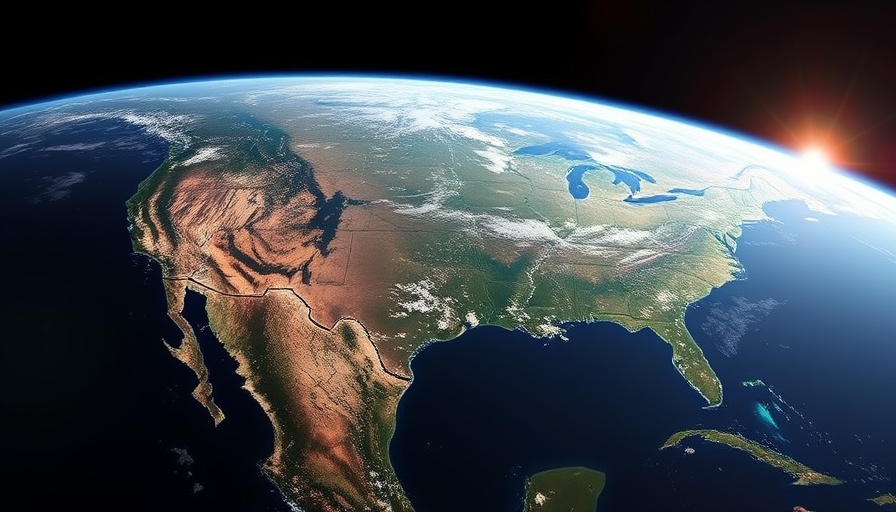
Unveiling the Drips Beneath North America
Recent geological studies reveal a surprising phenomenon: North America is experiencing a form of 'dripping' into the Earth's mantle. Researchers have discovered that an ancient slab of crust, hidden deep underneath the Midwest, is pulling large sections of the continent downward, creating substantial drips that extend nearly 400 miles into the mantle. This process, dubbed cratonic thinning, poses questions regarding the stability and evolution of the Earth's crust.
The Science Behind the Dripping
These drips are not just geological curiosities; they represent a significant force at work beneath our feet. The study, led by Junlin Hua, a geoscientist at the University of Science and Technology of China, highlights how remnants of the ancient Farallon plate, which once slid beneath the North American plate along the west coast, are responsible for this downward movement. The process began roughly 20 million years ago when the Farallon plate disintegrated due to tectonic shifts brought on by the advancing Pacific plate. This transformation resulted in the creation of the Farallon slab, which now remains beneath the Midwest and exerts a gravitational pull that influences the entire continent.
A Practical Understanding of Cratonic Thinning
Cratonic thinning represents alterations in regions of the Earth's crust that have remained stable for billions of years. The significant depth at which these changes occur—about 410 miles—limits our ability to observe and understand them. Using advanced seismic imaging techniques like full-waveform inversion, researchers can gather vital data about the crust's condition and movements, thereby allowing us to map out these intriguing dynamics. This advancement enhances our comprehension of not only geological processes but also the structural integrity of North America.
The Importance of Geological Research
Understanding these geological processes has implications far beyond academia. As we gain knowledge about the Earth's crust and mantle transitions, we can better anticipate geological events, adapt infrastructure projects, and prepare for potential natural hazards. Analyzing what lies beneath the surface can provide critical insights into how tectonic movements reshape our environment. Moreover, these discoveries set the stage for innovation in geoscience technology, fostering new methodologies in research and exploration.
Connecting This Discovery to Broader Scientific Trends
The processes at work beneath North America resonate with a broader trend in scientific inquiry: the integration of advanced technologies into traditional fields. Just as innovations in AI and data analytics are revolutionizing industries, cutting-edge seismic imaging is transforming our understanding of Earth sciences. This advancement underscores the interconnected nature of science, where insights gained from one discipline can propel innovations in another. As scientists continue to unravel the complexities of our planet, they pave the way for new discoveries and innovations in many fields.
This recent study not only showcases a fascinating geological discovery but also highlights the ever-evolving landscape of Earth sciences. As we embrace new technologies to reveal the Earth's mysteries, our understanding of the planet fundamentally changes.
 Add Row
Add Row  Add
Add 




Write A Comment